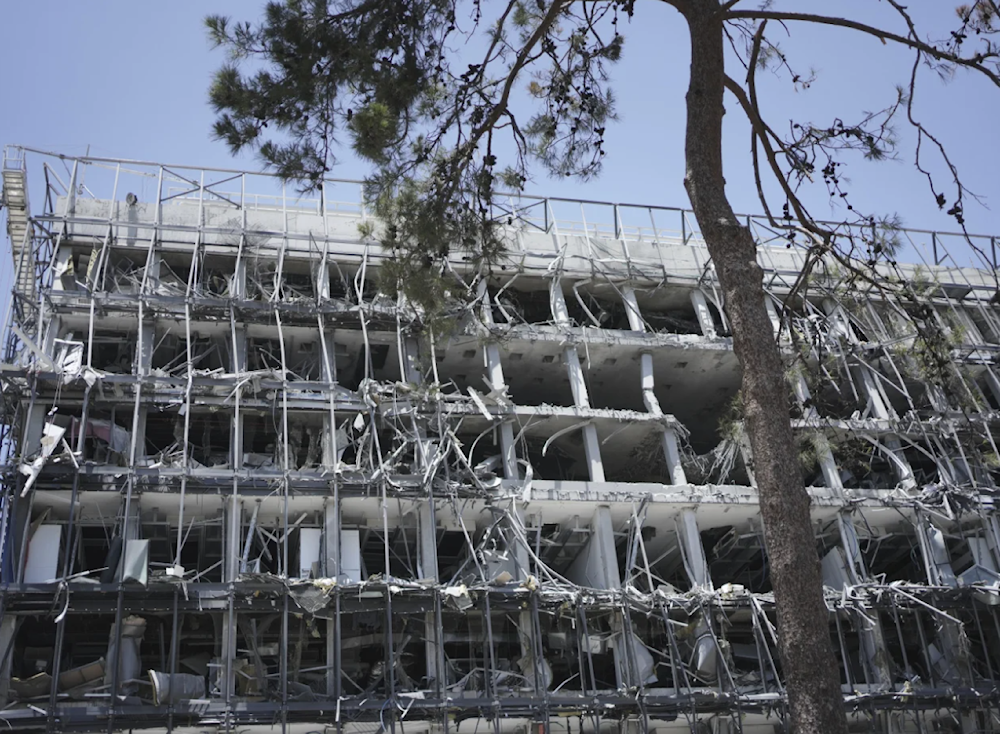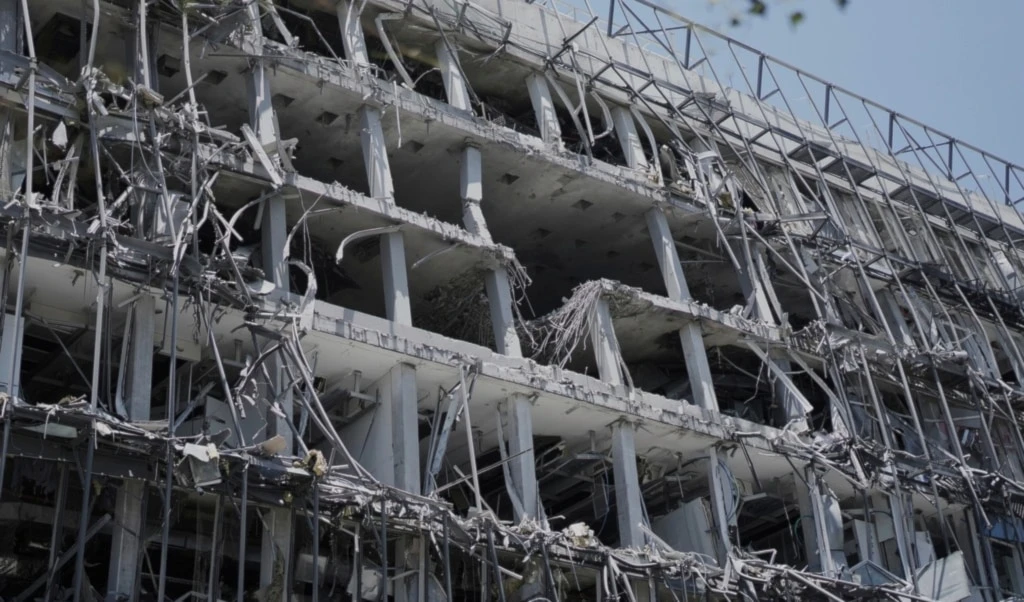'Israel's' Weizmann Institute reels from 'unprecedented' damage
The damage is estimated to be between 1.5 and 2 billion shekels (approximately $450,000 to $600,000).
-

Damage to the Weizmann Institute of Science from an Iranian missile strike in Rehovot, on June 19, 2025 (AP)
The Weizmann Institute, one of "Israel's" leading scientific research institutions, is grappling with massive damage following a missile strike by Iran. In a statement to Israeli newspaper Maariv, Alon Han, the head of the institute, described the impact of the attack as “unprecedented", revealing that the full scope of the damage is only now coming to light.
CCTV cameras documented the impact of an #Iranian missile on the Israeli Weizmann Institute of Science.
— Al Mayadeen English (@MayadeenEnglish) June 15, 2025
Israeli media also reported that a building housing laboratories for the institute had caught on fire, leaving people stuck in the building.
The institute plays a crucial… pic.twitter.com/BDxbhOPw2k
The targeted site housed advanced research in life sciences, artificial intelligence, and molecular biology, areas that have directly supported the Israeli entity’s development of surveillance, targeting, and weapons systems used in attacks across the region.
#Iran struck the Weizmann Institute of Science in Rehovot, southeast of Tel Aviv, whose media framed the operation as direct payback for the assassination of its nuclear scientists.
— Al Mayadeen English (@MayadeenEnglish) June 16, 2025
CCTV footage and satellite images later confirmed that the missile caused visible structural… pic.twitter.com/uBLlphvyCr
Described by Israeli media as the “scientific and military brain” of "Israel", the Weizmann Institute has played a pivotal role in the research and development of technologies underpinning airstrike coordination systems, drone warfare capabilities, and battlefield medical technology, all of which have been deployed in repeated assaults on civilian populations in Gaza, Lebanon, Yemen, and most recently, Iran.
The damage is estimated to be between 1.5 and 2 billion shekels (approximately $450,000 to $600,000), a staggering figure that underscores the severity of the assault on the institute’s infrastructure.
According to the data presented by Han, the attack damaged 112 buildings within the institute’s complex. Of those, 65 were dedicated to research, and one key building providing scientific services was also severely affected. Five buildings sustained extensive damage, with one collapsing entirely. This destruction left vital infrastructure offline, including 52 research laboratories and six other laboratories in the Biological Research Infrastructure Department.
One of the laboratories destroyed was run by Israeli Professor Eldad Tzahor, a veteran in the Department of Molecular Cell Biology. Israeli Professor Eran Segal, whose AI lab was also directly hit, noted that millions of dollars' worth of equipment was damaged beyond recovery due to water and structural damage. Segal’s lab had reportedly contributed to algorithmic systems used in battlefield decision-making and real-time surveillance, tools that have aided the Israeli entity's strikes in Gaza and elsewhere.
My lab at @WeizmannScience was completely demolished by the Iranian missile a few days ago. This is hard and sad as nothing was left to save. We study heart regeneration and regenerative medicine. As such, we will regenerate, regrow and rebuild. The one thing that wasn't gone is… pic.twitter.com/PPdACcXk6g
— Eldad Tzahor (@Tzahore) June 16, 2025
Critical research facilities 'shut down'
Han was candid in his assessment, stating that the missile strike had effectively “shut down” several critical research facilities, delivering a major blow, and warning that the institute, which has long been a hub for innovation and international collaboration, is now facing existential challenges in the wake of the attack.
He noted that approximately 60% of the institute’s international researchers have already left since the attack, adding that there is no government budget for development or equipment purchase.
Han also emphasized that the lack of funding for essential resources could further destabilize the institute's operations.
"If we purchased a sophisticated microscope for NIS 5 million, the property tax on it would be NIS 200,000. This gap does not cover the damage to knowledge and capabilities," he explained.
The total loss of equipment, including cutting-edge scientific instruments, poses a severe setback for ongoing research projects and will take years to recover from.

 3 Min Read
3 Min Read










